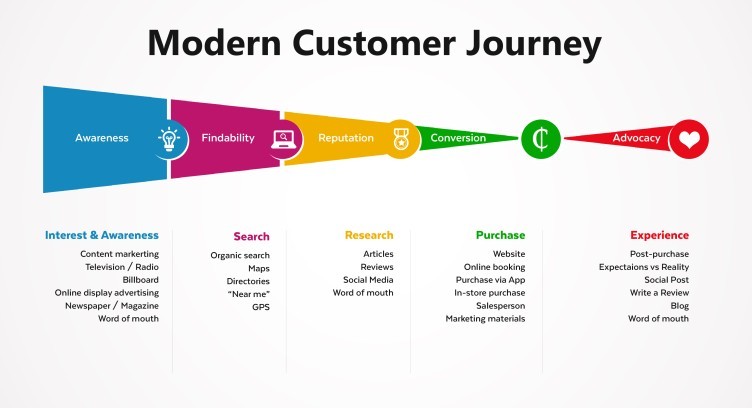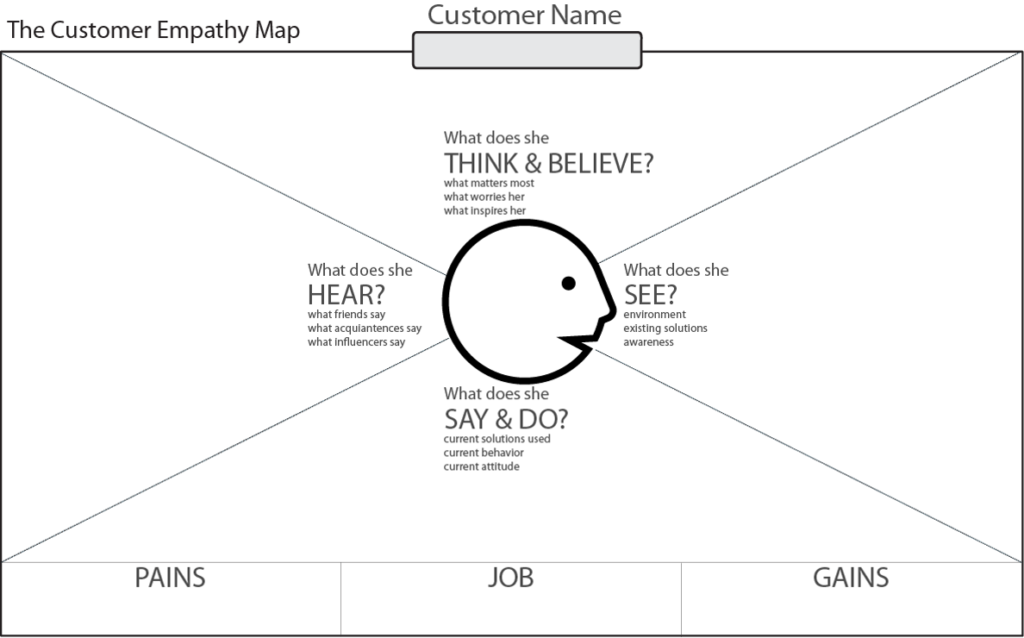A journey map is a powerful tool for any business looking to gain insights into their customers’ experience. It is a graphical representation of a customer’s journey with your company and can be used to identify problems and opportunities for improvement. By mapping out the customer journey, you can identify what works, what doesn’t work, and what could be improved upon to make the experience better for your customers.
What is a Customer Journey Map?
A customer journey map is a visual representation of the customer’s experience with your business. It provides a comprehensive view of the customer’s journey, from the initial contact to the purchase or service rendered. It also helps to identify customer frustrations, opportunities for improvement, and touchpoints where customers may need more support. By analyzing the customer journey, businesses can better understand their customers and gain invaluable insights into how to improve their customer experience.
The journey map is typically a detailed picture of the customer’s experience and the steps they take to complete a purchase or receive a service. It includes a timeline of the customer’s journey, their interactions with the company, their emotions at each stage, and their satisfaction with the overall experience. This comprehensive view of the customer journey enables businesses to identify areas for improvement, as well as growth opportunities.
Benefits of Customer Journey Mapping
Customer journey mapping is a powerful tool for businesses to gain insights into their customers’ experience. By mapping out the customer journey, businesses can identify the areas of friction, gain a better understanding of their customer’s needs, and create strategies to improve their customer experience. Here are some of the benefits of customer journey mapping:
- Identify customer frustrations: By mapping out the customer journey, businesses can identify areas of friction and pain points that may be causing customers to abandon their purchase or request service. This can help businesses make changes to their processes and improve the customer experience.
- Increase customer satisfaction: By understanding the customer journey, businesses can identify opportunities to improve the customer experience and increase customer satisfaction. This can lead to increased loyalty and repeat purchases.
- Increase customer retention: By understanding the customer journey, businesses can identify opportunities to better engage with customers and increase customer retention. This can lead to increased sales and more loyal customers.
- Understand customer needs: By understanding the customer journey, businesses can gain insights into the needs of their customers and how they can better meet those needs. This can lead to increased customer satisfaction and higher sales.
- Identify opportunities: By understanding the customer journey, businesses can identify opportunities to improve their products or services and increase their reach. This can lead to increased sales and more loyal customers.
Steps to Creating a Customer Journey Map
Creating a customer journey map is an important step for businesses looking to gain insights into their customers’ experience. Here are the steps for creating a customer journey map:
- Gather data: The first step is to gather data on your customers’ experiences. This can include sales data, customer surveys, customer support data, and more.
- Analyse data: The second step is to analyse the data and identify the steps the customer takes to complete a purchase or receive a service.
- Create a timeline: The third step is to create a timeline of the customer’s journey. This should include the steps the customer takes, their interactions with the company, their emotions at each stage, and their satisfaction with the overall experience.
- Identify touch points: The fourth step is to identify the touch points where customers interact with your business. This will help you to identify areas where customers may need more support or where there are opportunities to improve the customer experience.
- Analyse customer journey: The fifth step is to analyse the customer journey. This should include identifying areas of friction, opportunities for improvement, and customer needs.
- Create a customer journey map: The sixth step is to create a customer journey map. This should include the timeline of the customer’s journey, their interactions with the company, their emotions at each stage, and their satisfaction with the overall experience.
- Optimise customer journey: The seventh step is to use the insights from the customer journey map to optimise the customer journey. This should include identifying areas of friction and opportunities for improvement, as well as creating strategies to improve the customer experience.
Analysing Your Customer Journey Map
Once you have created your customer journey map, the next step is to analyze it. This should include identifying areas of friction, opportunities for improvement, and customer needs. Here are some tips for analyzing your customer journey map:
- Identify touch points: Identify the touchpoints where customers interact with your business. This will help you to identify areas where customers may need more support or where there are opportunities to improve the customer experience.
- Identify customer frustrations: Identify areas of friction and pain points that may be causing customers to abandon their purchase or request service. This can help businesses make changes to their processes and improve the customer experience.
- Identify opportunities: Identify opportunities to improve the customer experience and increase customer satisfaction. This can lead to increased loyalty and repeat purchases.
- Identify customer needs: Identify the needs of your customers and how you can better meet those needs. This can lead to increased customer satisfaction and higher sales.
- Identify strategies: Identify strategies to improve the customer experience and increase customer retention. This can lead to increased sales and more loyal customers.
Optimising Your Customer Journey
Once you have identified areas of friction and opportunities for improvement, the next step is to create strategies to optimise your customer journey. Here are some strategies for optimising your customer journey:
- Streamline processes: Identify ways to streamline processes to reduce friction and make it easier for customers to complete their purchase or receive a service.
- Personalise experiences: Identify ways to personalise the customer experience and make it more meaningful for customers.
- Improve customer support: Identify ways to improve customer support and make it easier for customers to get the help they need.
- Leverage technology: Identify ways to leverage technology to improve the customer experience and make it easier for customers to complete their purchase or receive a service. For example, if you run a restaurant in a residential district, you can increase sales by shortening your customer’s journey and offering delivery services. This does not mean creating a full custom ordering platform which is expensive but simply partnering with digital delivery apps like Uber Eats, Grab, Glovo, Jumia ETC
- Measure customer satisfaction: Measure customer satisfaction and use the insights to identify areas of improvement and opportunities for growth.
Types of Customer Journey Maps
There are many different types of customer journey maps. Here are some of the most common types:

Funnel Maps: Funnel maps are used to visualise the customer journey from initial contact to purchase or service. They provide an overview of the customer’s journey and help to identify areas of friction and opportunities for improvement.

- Empathy Maps: Empathy maps are used to gain insights into the customer’s experience. They provide an in-depth view of the customer’s journey, including their thoughts, feelings, and actions.
- Process Maps: Process maps are used to visualise the customer’s journey from initial contact to purchase or service. They provide an overview of the customer’s journey and help to identify areas of friction and opportunities for improvement.
- Member Journey Maps: Member journey maps are used to visualise the customer’s journey from initial contact to purchase or service. They provide an overview of the customer’s journey and help to identify areas of friction and opportunities for improvement.
- User Journey Maps: User journey maps are used to visualise the customer’s journey from initial contact to purchase or service. They provide an overview of the customer’s journey and help to identify areas of friction and opportunities for improvement.
Conclusion
Mapping out the customer journey is an important step for any business looking to gain insights into their customers’ experience. By mapping out the customer journey, businesses can identify areas of friction, gain a better understanding of their customer’s needs, and create strategies to improve their customer experience.
Creating a customer journey map can be a daunting task, but with the right tools and resources, it can be a powerful tool for any business looking to gain insights into their customers’ experience. We hope this blog post has given you a better understanding of customer journey maps and how you can use them to unlock the power of customer journey mapping for your business.


